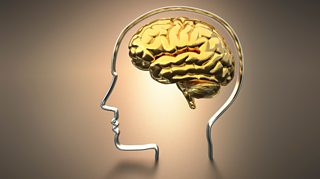Nine fascinating facts about awesome iodine
Iodine is an essential element - without which we would suffer severe developmental problems - and yet most of us have no idea how much we need, or where it comes from. In Their Element: Awesome Iodine looks at the effects and uses of the mineral, as well as the legacy of past iodine deficiency.

Here are a few juicy nuggets about element number 53 on the periodic table, and its extraordinary uses.
1. We get most of our iodine from milk
Seaweed, plankton, bacteria and some simple chemistry in the middle of the ocean and the result is iodine in our planet's seas. From there the mineral gets distributed around the world, raining directly on to the land and plant life.

Although some fish and eggs are great sources of iodine, in Britain our main dietary source is milk - because cows eat grass containing the mineral. But it's not just grazing which gives cattle their dose of iodine.
In the winter our milk has higher iodine content than in the summer and that's because cows are likely to be more reliant on mineral-enriched feed containing, you've guessed it, iodine. We can get around 50% of our daily-recommended intake just by drinking a glass of milk a day!
2. Iodine regulates our metabolism
Iodine is a key constituent of the thyroid hormones that are crucial to growth and metabolism in the human body.
We can get around 50% of our daily-recommended iodine intake just by drinking a glass of milk a day!
The thyroid gland is related to our metabolic rate, controls cell energy and is involved in almost all processes within the body.
If it doesn't get enough iodine the thyroid can stop functioning effectively and swell in size, causing a lump to form in the front of the neck called a goitre.
3. Our brains need iodine
Iodine is crucial for foetal brain development. It's particularly important in the first three months of pregnancy because the growing baby's thyroid action only starts to kick in at about 14 weeks.

Before that the foetus is entirely dependent on the mother's thyroid.
If a pregnant woman doesn't get enough iodine, and her thyroid action is impaired, it can effect the brain development of the baby.
In fact, iodine deficiency is the largest preventable cause of learning difficulties in the world. In extreme cases a deficiency can result in congenital thyroid hormone deficiency, historically known as 'cretinism.'
4. It’s an amazing antiseptic
Most of us probably associate iodine with a brown, antiseptic solution, used in the home to clean wounds. (Beware the brown staining!) The antimicrobial action of iodine is quick and works at low concentrations, which is why it is also used in operating theatres the world over to disinfect the skin before surgery. Iodine has even been used to purify water, either in tablet or liquid form.
5. Radioactive iodine can cure cancer
Exposure to radioactive iodine isotopes can be extremely dangerous. After the catastrophic nuclear accident at Chernobyl, children were developing thyroid cancer from consuming locally produced milk.
But it can also be harnessed for good: we can use radioactive iodine, the same stuff released after a nuclear incident, to treat cancer of the thyroid.
The radioactive iodine is directed at those cells we want to kill, including cancer cells derived of the thyroid that have spread to other parts of the body. Although a smaller dose can cause cancer, the right dosage can treat it.
6. It was used to make the first photographs
In 1839, the French painter Louis Daguerre placed liquid iodine on a silvered copper plate, and exposed the plate to light. In doing so he had created a photographic process, in which liquid iodine was the light-reactive chemical and the copper plate was the base. The photograph called the 'daguerreotype' was born. Daguerreotypy was the first publicly available photographic process, and was the most commonly used for nearly twenty years.

7. Iodine is used to test for starch
Liquid iodine is used in chemistry labs as a detector for starches. A solution of iodine and potassium iodide is dripped on to a substance and if it contains starch, a deep blue colour will materialise.
Here's the science bit! Starches contain a sugar called amylose, which is shaped like a tight coil. When added, the iodine molecule slips inside this coil and gets stuck - causing the blue to appear.
This iodine test has been used to detect counterfeit banknotes printed on starch-containing paper!
8. It can be used to preserve paint
Water-based paints are prone to contamination, mould and fungus, and need an antimicrobial or biocide to act as a preservative. And that's where iodine comes in.

Iodine based biocides are often used as in-can preservatives, as well as helping to prevent the growth of mould after application. No one wants mouldy mouldings!
9. Iodine is used in x-rays
The versatile element can be used as a contrasting agent in some medical x-ray imaging. The iodine essentially absorbs x-rays, preventing the radiation from passing through the tissue, and thereby produces a much clearer image of bodily structures like the vascular system or gastrointestinal tract. X-cellent!
More from Radio 4 in Four
-
![]()
In Their Element - Awesome Iodine
Why iodine is essential for our health.
-
![]()
Confection or Invention: The Strangely Named Sweets Quiz!
Can you spot the real candy names in this collection and which ones we’ve made up?
-
![]()
12 tips for how to save your pennies
Clawing back cash doesn’t have to mean big changes. It’s time to have fun being frugal.
-
![]()
Hello, Hey and Hi – the meanings behind greetings
Here are a few things we learned about greetings from Word of Mouth…




